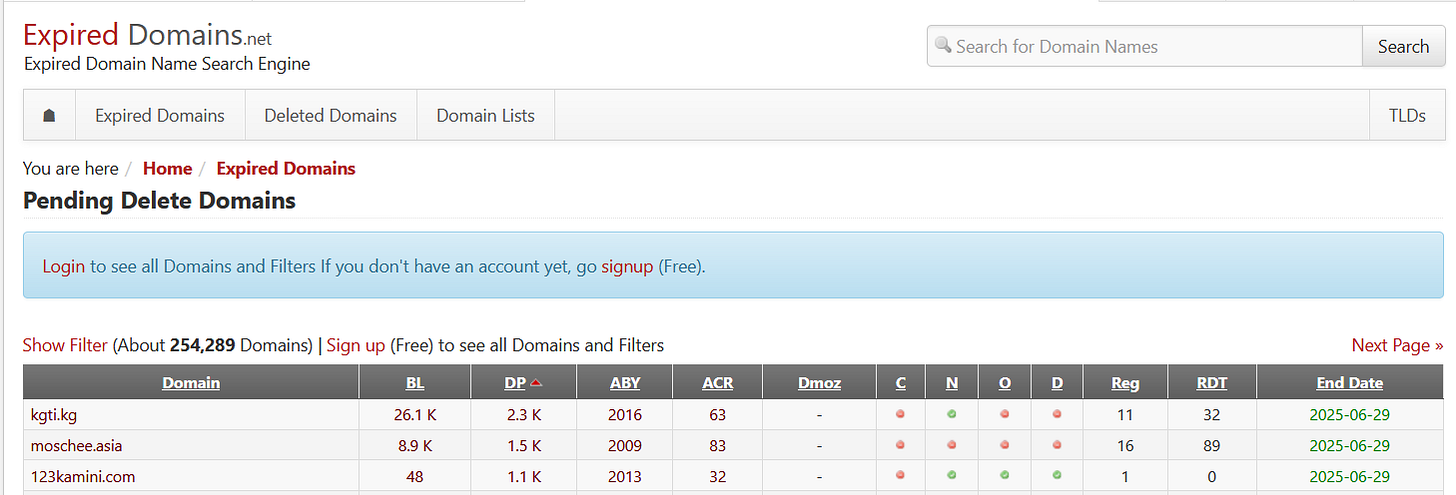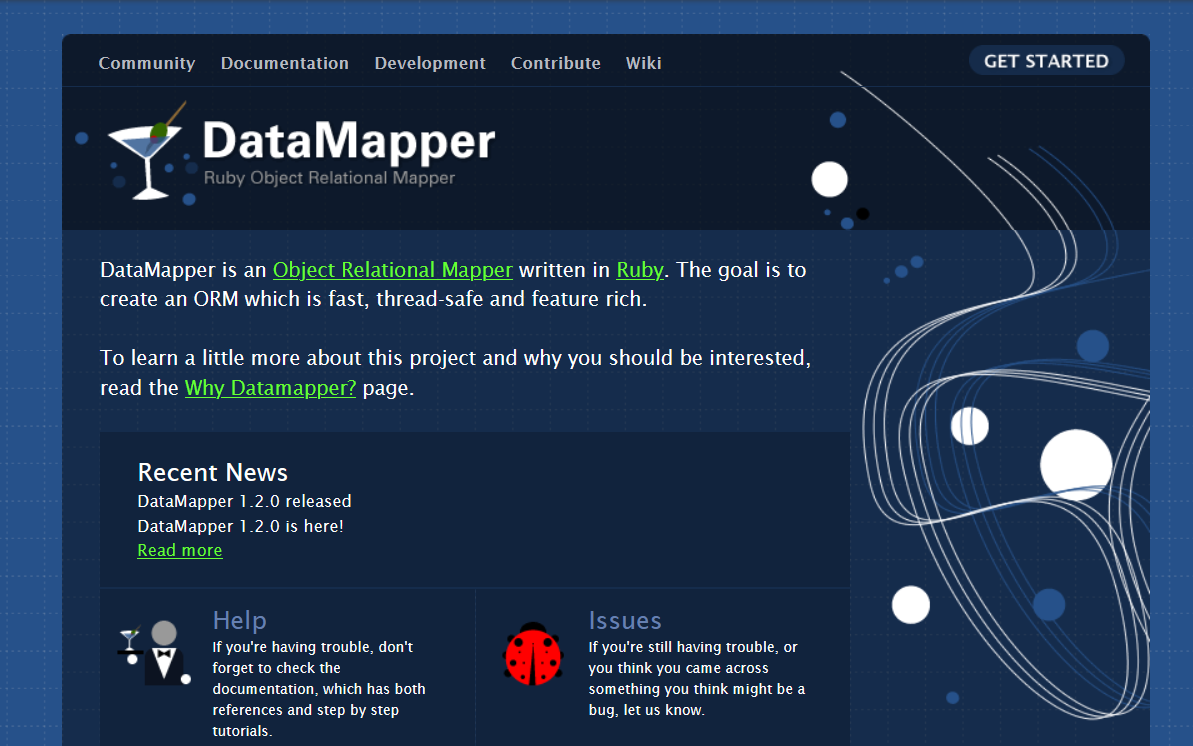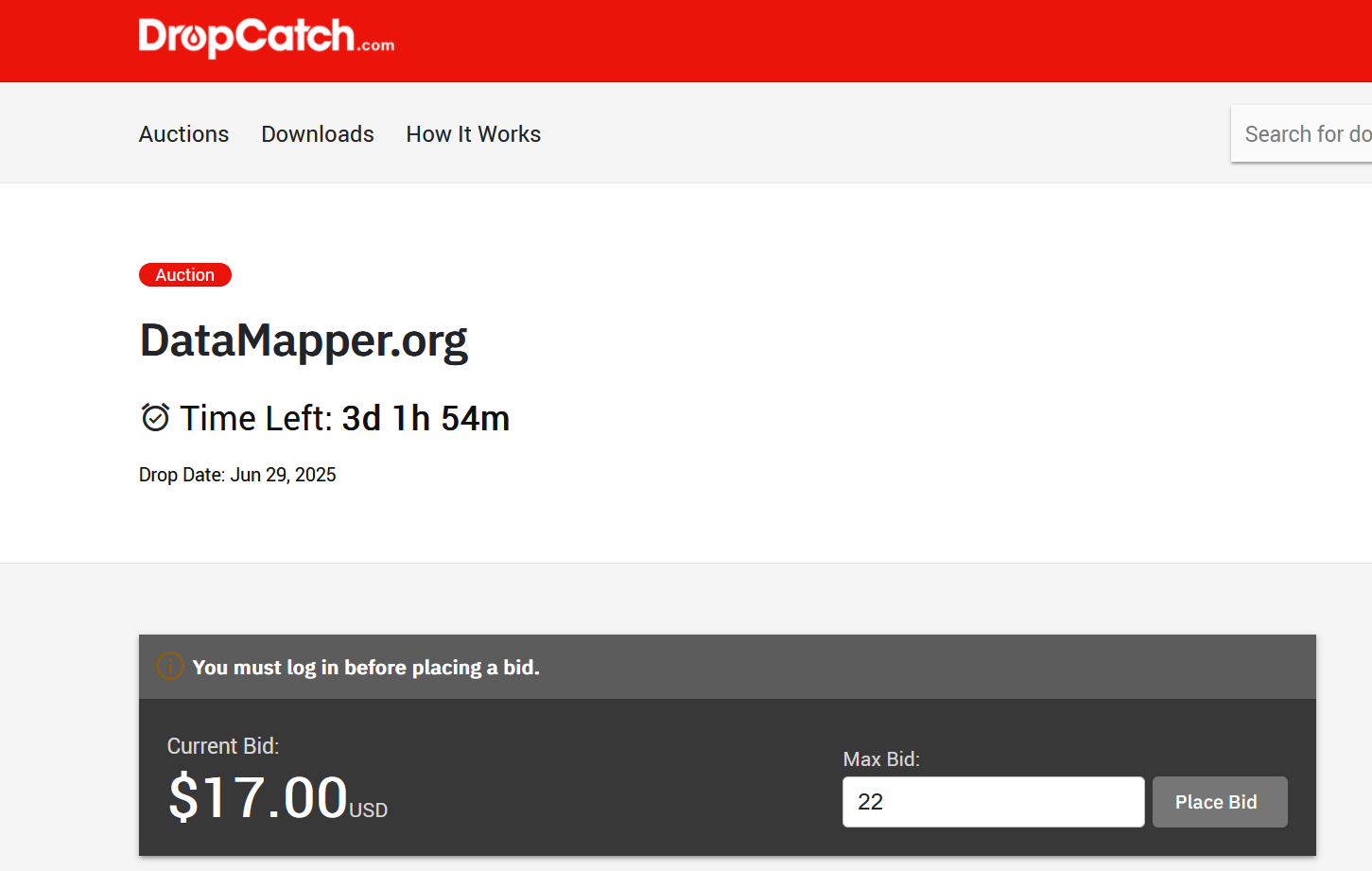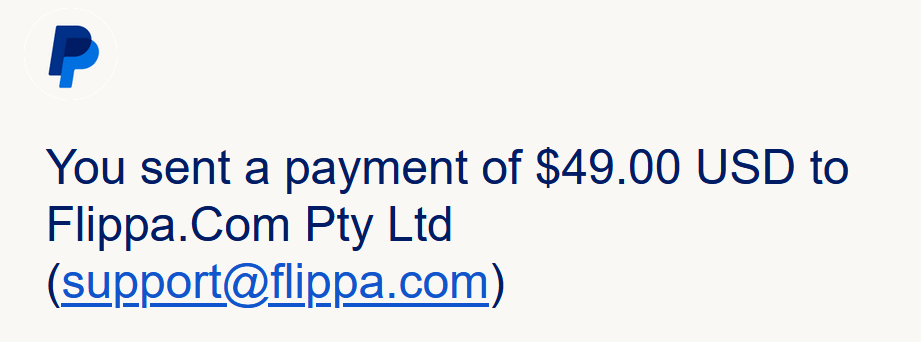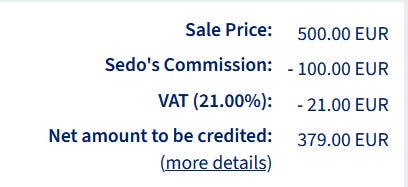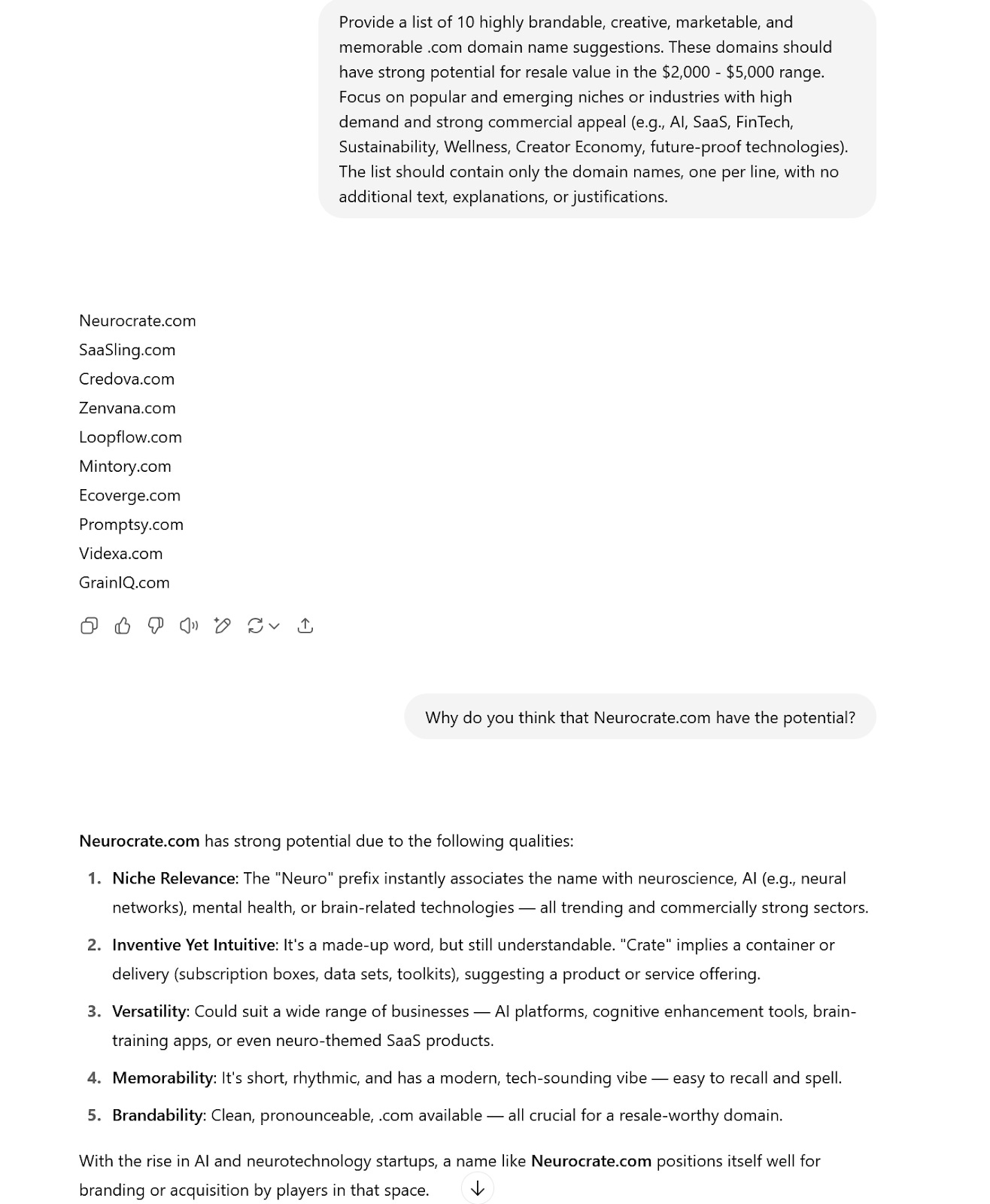Domain Flipping in 2025: The Playbook (Part 2)
Step-by-step strategies for spotting trends, catching expired domains, and selling profitably.
In my newsletter a while ago
I’ve explained the basics of domain flipping. The business was hot more than 20 years ago, but even today there is room to make money (with big competition of course).
Although I advice focusing on something more perspective, if you’re still interested in domain flipping after reading about the risks and challenges, at least do it right.
Here’s a practical step-by-step playbook to get started and be profitable.
Rules to Follow from Day One
Stick to .com: It’s still the gold standard. Other TLDs might look trendy (.ai, .xyz), but .com holds the strongest resale potential. This has an exception: if you are familiar with the local market. If you keep reading, you'll see that when I reviewed expired domains, I mentioned one specific .FR domain was a decent deal. But this is if you have an idea of what the local domain market in France is like, and you know French (as this really helps with cold sales). Even so, it carries more risks than a .com, so you have to be sure the price you're paying compensates for that.
Avoid anything that might be trademarked: Stay away from names that resemble existing brands. It’s not worth the risk.
Start small: Don’t buy 100 domains on day one. Start with 3–5 names and focus on learning the game first. A good place to learn from others is the Namepros forum.
Quality > Quantity
In the early days, owning a few high-quality domains is far better than having hundreds of mediocre ones. A smaller portfolio allows you to:
Research each domain deeply before buying
Do outbound outreach to potential buyers
Test sales strategies without overwhelming yourself
Aim for 5–10 solid domains at a time. If those work out, reinvest profits to scale.
Proven Strategies for Choosing a Domain
There’s no universal strategy in domain flipping. Some play the numbers game, owning thousands of domains. Others wait for the perfect opportunity. If you’re just starting out, the smart path is somewhere in the middle — learn slowly, test a few ideas, and double down on what works.
Identifying trends - you can try guessing what would be trendy in a year or so. But it’s always hard with the trends - if you knew exactly, you would make a lot of money by executing different ideas in the niche.
Drop catching domains - this is about finding domains holding SEO value. What is preferable is to find the ones that do also make sense. Imagine two expired domains available for sale - passiveincome.com and 4785dmkd.com. They might have near identical SEO value, but guess which one is likely to be wanted by the market?
Here are the main two proven strategies:
1. Catching Trends Early
This means spotting emerging industries or narratives before they become mainstream — and securing domain names that align with them.
How to do it:
Be deeply immersed in a niche (e.g., crypto, AI, finance, gaming).
Pay attention to Twitter/X, Reddit, niche Discords, Product Hunt, and early-stage VC activity.
Notice repeated phrases, buzzwords, or product types — especially those that seem new.
Buy domains that fit those concepts before others catch on.
Real example:
Last year in the crypto world, “AI agents” became a hot narrative.
Following the trend, you might have registered web3agents.ai or cryptoagents.ai, or .com variations of them. If you spotted that early and grabbed relevant names, you were ahead of the curve.
Pro tip: Focus on domains that could realistically become tools, products, or directories — not just random buzzword.
2. Drop-Catching Domains with SEO Value
Expired domains often carry backlink profiles and search engine trust, which gives them value beyond the name itself.
How to do it:
Use tools like ExpiredDomains.net, SpamZilla.io, or auctions on GoDaddy/Sedo.
Filter for domains with:
High domain rating (DR)
Backlink count
Indexed pages
Clean past use (check Wayback Machine and Ahrefs)
Real example:
A domain registered in 2007 with 4,000+ backlinks, DR 54, and a history as a legit software project may be worth grabbing — even if the brand name isn’t perfect. SEO buyers may want to redirect it or repurpose it.
Pro tip: A short, clean domain with real SEO juice is always easier to sell than a fresh, made-up one.
Finding and Evaluating Domains
Setting Up the Expectations
Before you start hunting for domains, set real expectations. This will save you both time and money.
For Unregistered Trend Domains
Let’s be clear:
Finding valuable 4–6 character domains is nearly impossible. All numeric domains from 0.com to 999999.com are already registered. The best ones (especially repetitive numbers) are long gone — many snapped up by companies like Baidu.
Same goes for random short letter-based domains. There are simply too many combinations already taken. Unless a domain has SEO value, randomly trying to guess short names is not worth it.
Aiming to find domains worth tens of thousands? Unlikely.
But aiming for domains in the $100–$1,000 resale range? That’s realistic.
Don’t waste time with junk worth pennies — you’ll lose more on renewals than you’ll gain.
For Expired Domains
When analyzing expired domains, look for two things:
SEO value — if a domain has strong existing backlinks and ranks well, it can still be valuable even if the name itself isn’t premium.
Name quality — generic words (e.g. cake.com, play.com) are gold. But don’t expect to find them expiring. Most good ones are renewed forever.
If both conditions match - good name + SEO authority - that’s a rare jackpot. But competition will be high.
Use backorder platforms like:
Dynadot
NameJet
SnapNames
If only one person places a backorder, you get it.
If multiple people do, an auction begins.
If different people backorder the same domain through different backordering services, it's a race to see which service's technology is faster at the exact moment the domain drops.
Also note: the original owner can still renew during the grace period. If they do, no one gets it.
Tools for Finding Domains
There are several tools that can help you track expiring or expired domains. Some are free, others paid — but even the free ones can give you a good head start.
Best Free Starting Point: ExpiredDomains.net
https://www.expireddomains.net/
This is one of the best free tools for beginners. It gives you access to:Expired domains (already deleted)
Domains in “Pending Delete” status
SEO indicators: backlinks, age, indexed pages
Availability across other TLDs
It’s filterable, sortable, and gives you enough data to make solid decisions without paying anything.
Other Useful Tools
GoDaddy Auctions – GoDaddy’s own marketplace for domains. Auctions can get competitive, but this is one of the biggest platforms with serious traffic.
Name.com Aftermarket – Another source of expiring domains, but has no built-in SEO metrics. Better for name-based scouting than SEO hunting.
SpamZilla – A more advanced tool that enriches domains with SEO data. Has a free tier but mostly paid. I haven’t personally tested it in-depth, but it seems well-rated.
Keep in mind:
Tracking all expiring domains is technically difficult and resource-intensive. Each tool pulls from different data sources — so no single tool gives a full picture.
Recommendation for beginners: start with ExpiredDomains.net. It’s free, feature-rich, and has decent coverage.
Registering Unregistered Domains
If you’re hunting for new, unregistered domains (not expired ones), you can use any major domain registrar:
GoDaddy
Namecheap
Cloudflare
Porkbun
Some personal notes:
GoDaddy and Namecheap often offer good initial prices, but renewal costs are usually higher.
Cloudflare has transparent, low pricing — good for long-term holdings.
Porkbun is what I used for my last project — great pricing, no issues so far.
If you’re privacy-focused:
Njalla (founded by The Pirate Bay team) offers anonymous registration. A bit more expensive, but still cheaper than GoDaddy or Namecheap.
Finding a Good Domain
Here are a few tricks that will help you decide how to identify a valuable domain.
Check if the same domain is free with other TLDs.
If a domain is registered across multiple top-level domains, that’s a strong signal of value. Here is a one candidate that I found on expireddomains.com:
On ExpiredDomains, four red dots next to a domain indicate that .com, .net, .org, and .de versions are taken. That usually means demand exists for the name.
Check SEO Metrics: DA, DR, Backlinks.
Use available tools to check:
Number of external backlinks
Age of the domain
Domain authority or domain rating
In this case, the domain has over 4,500 external backlinks and was registered in 2007. That’s a strong signal.
Free tool to check: Ahrefs Website Authority Checker
Ahrefs shows a DR of 54, with mostly dofollow links — very promising.
Use the Wayback Machine to Check the Site’s History.
This shows what was previously hosted on the domain. It helps you:
Avoid adult/spammy history
Understand prior content or projects
This is a screenshot from a Wayback Machine of a 2017 version of the website.
In this case, the domain was used by a Ruby project and even had its own wiki.
The GitHub repository shows the project is now archived. That’s a solid opportunity to build something new — but you should still check for trademarks.
Currently, the domain is on auction:
When 2 days were left, the bid was already $472 USD up from initial $17 USD.
Other Examples
Some other good examples of candidates that I found on ExpiredDomains:
FlashCode.fr - domain with 38 domain rating score, .com, .org, .net, and .de registered. I wouldn’t personally touch it as it is not a .com domain, but if you know the local french market of domains, might be a good catch.
infaholic.com - registered in 2015, has a DR of 34, in a weight loss niche. Could be a good option for a website in a similar niche.
Domains I’d avoid:
RaiderCash.com - registered in 2007, has a domain rating of 35, BUT, web archive shows it is about adult content. It’s tough to use a domain with such a reputation with purposes other than it is initial. The backlink profile will probably also indicate backlinks from similar websites.
My-Essay-Writing.com - registered in 2010, has a domain rating of 52, but the fact that it has “-” inside, makes it less desirable by potential buyers.
Check the domain worth using different tools
Part of the domain valuation was already done in the first two steps. But you should also use:
NameBio.com - to check historical sales of similiar domains
GoDaddy Domain Value appraisal - take this tool with a grain of salt, as it often matches one or another keyword in your domain, and decides its value by it.
Selling the Domain
Listing for Sale
For listing domains, you generally have two main approaches:
Listing on a dedicated platform
Creating your own "For Sale" landing page
Each has its advantages and challenges.
Platform listings (e.g., Sedo, GoDaddy Auctions, Flippa): This is often the recommended starting point for many domain flippers. Platforms like Sedo, GoDaddy Auctions, or Flippa act as established marketplaces with existing buyer traffic.
You can choose to simply list your domain for a fixed price, allowing buyers to purchase it instantly, or set up an auction where interested parties bid against each other, potentially driving the price higher, especially for highly desirable domains.
The biggest disadvantage - costs associated with that.
For example, Flippa charges 49$ just for listing the domain. It does not matter if you will sell it or not, you pay it upfront.
I personally have had a bad experience with Flippa, I paid the price, but my domain didn’t attract any potential buyers.
If we talk about Sedo, it is free, but Sedo takes commission.
Real example - I sold my domain for 500 euros, and Sedo’s part from that was 100 euros, plus I had to pay VAT.
Alternatively, you can create a simple, static web page directly on the domain you wish to sell (e.g., yourdomain.com displays "This Domain is For Sale. Contact sales@yourdomain.com"). This gives you full control and avoids platform fees, but it is significantly harder to attract buyers this way.
Cold Outreach Strategy
Cold sales outreach involves directly contacting potential buyers who you've identified as having a strong, specific need for your domain. This is a proactive strategy that, while demanding, can result in a faster sale.
What you should keep in mind:
Most people aren’t looking to buy a domain. Businesses you contact likely didn’t wake up thinking about acquiring a domain today. Expect low response rates and be prepared for rejections or no replies at all.
Avoid domain squatting. Do not buy trademarked or misleading lookalike domains to pressure companies into purchasing them. This is unethical, often illegal, and can get you sued.
An example - construction.com is a premium domain that might be suggested to plenty of businesses in construction.
How to do cold outreach the right way:
1. Find Potential Buyers
Look for companies or individuals who:
Are using a longer or less professional domain (e.g. smith-construction-az.net while you own smithconstruction.com)
Recently launched (check Product Hunt, Crunchbase, LinkedIn)
Recently raised funding or rebranded
Are actively advertising online (check Facebook Ads Library or Google Ads)
2. Search for Contact Details
Once you’ve identified a prospect:
Use Hunter.io, Apollo.io, or Clearbit to find email addresses
Check the company’s website — the About, Team, or Contact pages often have direct emails
Use LinkedIn to find decision-makers (e.g. founders, CMOs) and then verify their email using tools above
3. Write a Personalized Message
Avoid generic spammy pitches. Personalize your message to show you've done your research. Mention:
Why you think the domain fits their brand
Any value signals (e.g. SEO potential, memorability, premium nature)
That it’s a one-time opportunity (but avoid hype language)
Example:
Subject: Quick idea for [Their Brand]
Hi [First Name],
I came across [their website] and noticed you're building [mention product/service]. I own the domain [yourdomain.com], which could be a strong upgrade for your brand. It’s a one-word, brandable domain that could help boost credibility, improve SEO, and make your marketing more effective.
Let me know if you're open to discussing it.
Best,
[Your Name]
4. Don’t send from your main domain
Email filters are intact, and you are risking to flagging your own email addresses as a spammer.
Using a random GMAIl address will also look unprofessional. Therefore, james7854@gmail.com does not give credibility either.
Instead, get a separate outreach domain. It’s a small investment (~$10–20/year + email hosting), but huge leverage in credibility, trust, and inbox placement.
Keep in mind, this approach of cold sales outreach for domain flipping, has very low success rates. But it takes only one buyer to make it worth it.
Finding the right customer is key. If you have a domain that you think is worth 20,000$, your target customer is definitely not someone who launched on Producthunt.
Can AI help with domains flipping?
Not really.
It can give you some suggestions and ideas about what domains to target. But the issue with them is that they feel artificial - as they are. And most of the time the domains are already registered.
Also, thousands of others use the same tools.
Here’s what I got from ChatGPT:
By the way, neurocrate.com was registered.
Bottom line: don’t rely on AI to find gems.
Summary
Domain flipping is risky, slow, and often feels like a gamble. It requires capital, patience, and a willingness to accept losses. There’s no foolproof strategy — just a mix of educated guessing, market awareness, and constant experimentation.
Most people who try fail to turn a profit.
But if you approach it as a hobby with upside potential, rather than a guaranteed income stream, this playbook gives you a solid foundation to start.





